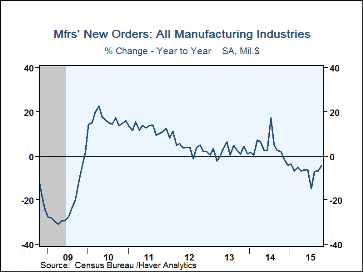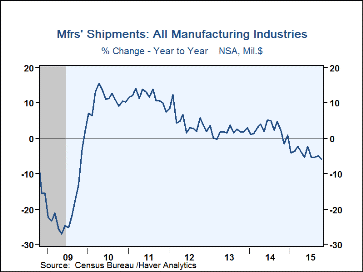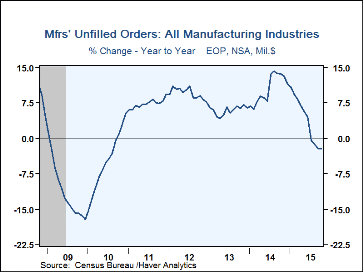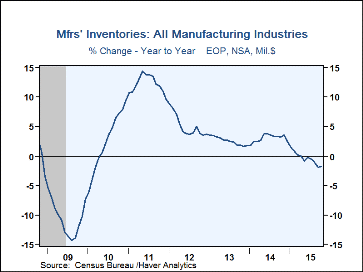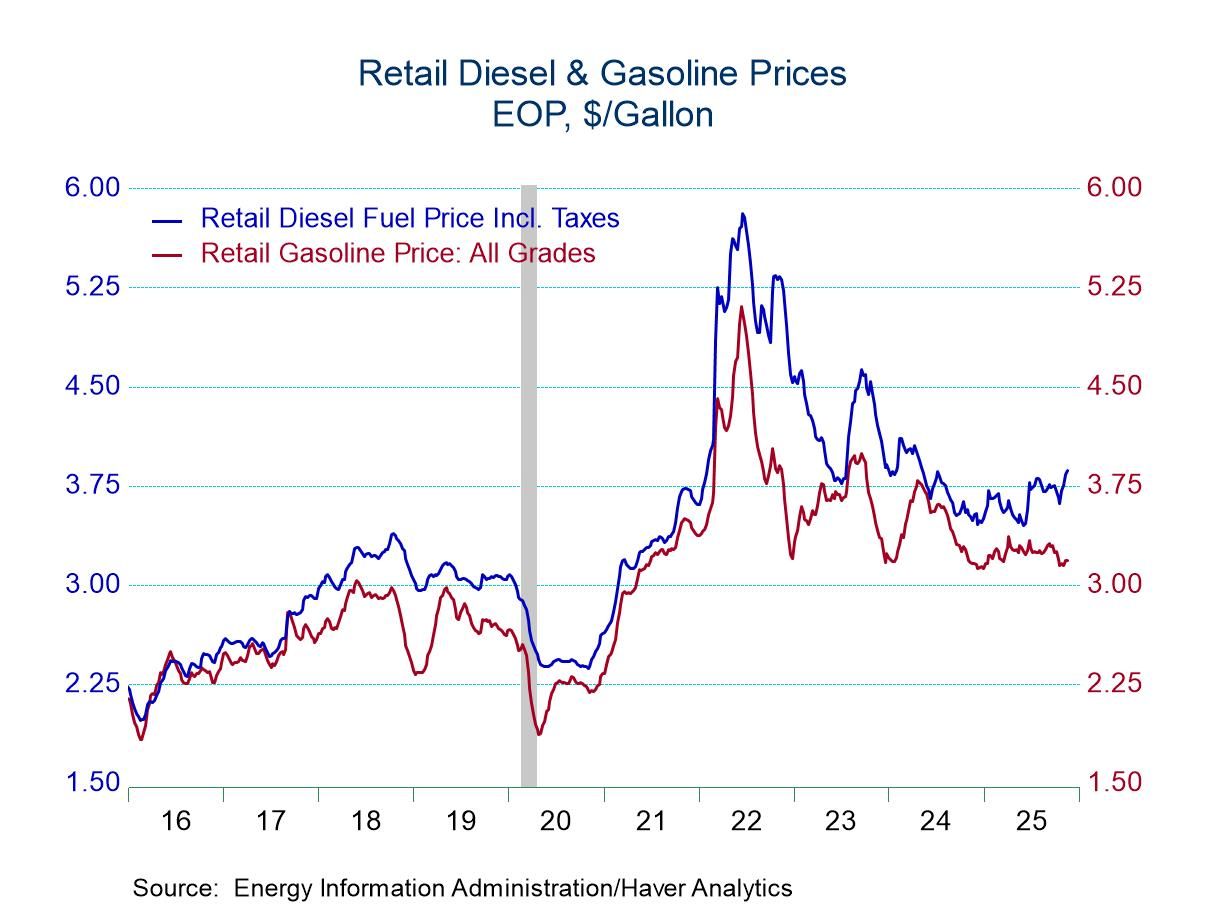 Global| Dec 03 2015
Global| Dec 03 2015U.S. Factory Sector's New and Unfilled Orders Increase
by:Tom Moeller
|in:Economy in Brief
Summary
New orders in the manufacturing sector rebounded 1.5% during October (-5.7% y/y) following a 0.8% September decline, revised from -1.0%. The increase roughly matched expectations in the Action Economics Forecast Survey. It was led by [...]
New orders in the manufacturing sector rebounded 1.5% during October (-5.7% y/y) following a 0.8% September decline, revised from -1.0%. The increase roughly matched expectations in the Action Economics Forecast Survey. It was led by a 2.9% rebound (-1.1% y/y) in durable goods orders which were little-revised from last week's advance report. The rise was paced by an 81.0% recovery (24.5% y/y) in nondefense aircraft & parts. Factory sector orders excluding the transportation altogether nudged 0.2% higher (-1.6% y/y) following three straight months of decline. Orders for nondurable goods (which equal shipments) remained unchanged (-9.9% y/y), following three straight monthly drops. A 0.1% easing (-35.5% y/y) in shipments from petroleum refineries followed three consecutive sharp drops as prices fell. Also dipping by 0.1% (-0.4% y/y) were apparel shipments. Food product shipments edged 0.1% higher (-2.2% y/y) but basic chemical shipments fell 0.6% (-2.5% y/y). Textile mill shipments rose 0.5% and they were up 0.4% y/y. Durable goods shipments declined 1.0% (-1.7% y/y) led by a 1.3% decrease (-3.4% y/y) in machinery.
Unfilled orders in the manufacturing sector increased 0.3% (-2.1% y/y). Transportation sector backlogs rose 0.4% (-2.3% y/y), led by a 0.6% rise (-1.0% y/y) in nondefense aircraft & parts. Outside of the transportation sector, backlogs remained unchanged (-1.9% y/y). Electrical equipment backlogs fell 1.0% (-3.2% y/y), the seventh decline in as many months. Computer & electronic product backlogs gained 0.4% (6.2% y/y).
Factory sector inventories eased 0.1% (-1.8% y/y), about as they have during the last four months. Outside of the transportation sector, inventories were off 0.1% (-3.0% y/y). Primary metals inventories fell 0.9% (-8.3% y/y) and machinery inventories eased 0.3% (-1.8% y/y). Electrical equipment & appliance inventories declined 0.4% (+0.3% y/y) and computer & electronic product inventories fell 0.6%; they were unchanged y/y.
The factory sector figures are available in Haver's USECON database. The expectations figure from the Action Economics Forecast Survey is available in AS1REPNA.
| Factory Sector- NAICS Classification (%) | Oct | Sep | Aug | Y/Y | 2014 | 2013 | 2012 |
|---|---|---|---|---|---|---|---|
| New Orders | 1.5 | -0.8 | -2.1 | -5.7 | 3.5 | 2.0 | 4.7 |
| Shipments | -0.5 | -0.3 | -0.9 | -5.9 | 2.6 | 1.9 | 4.7 |
| Unfilled Orders | 0.3 | -0.5 | -0.3 | -2.1 | 11.5 | 6.5 | 7.8 |
| Inventories | -0.1 | -0.5 | -0.4 | -1.8 | 2.4 | 1.7 | 3.8 |
Tom Moeller
AuthorMore in Author Profile »Prior to joining Haver Analytics in 2000, Mr. Moeller worked as the Economist at Chancellor Capital Management from 1985 to 1999. There, he developed comprehensive economic forecasts and interpreted economic data for equity and fixed income portfolio managers. Also at Chancellor, Mr. Moeller worked as an equity analyst and was responsible for researching and rating companies in the economically sensitive automobile and housing industries for investment in Chancellor’s equity portfolio. Prior to joining Chancellor, Mr. Moeller was an Economist at Citibank from 1979 to 1984. He also analyzed pricing behavior in the metals industry for the Council on Wage and Price Stability in Washington, D.C. In 1999, Mr. Moeller received the award for most accurate forecast from the Forecasters' Club of New York. From 1990 to 1992 he was President of the New York Association for Business Economists. Mr. Moeller earned an M.B.A. in Finance from Fordham University, where he graduated in 1987. He holds a Bachelor of Arts in Economics from George Washington University.


